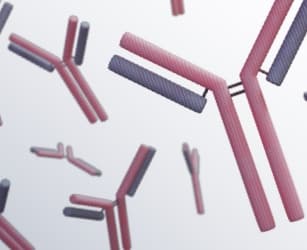MyIgSource
Some Types of PI:
Immunoglobulin G (IgG) Subclass Deficiency
Most of the antibodies in the blood and other fluids that surround the body’s tissues and cells are part of the immunoglobulin G (IgG) class. The IgG class is divided into four subclasses, including IgG1, IgG2, IgG3, and IgG4. Each type helps the immune system fight infection in a specific way.
People are diagnosed with an IgG subclass deficiency when the deficiency is limited to no or very low IgG levels of one or two subclasses of immunoglobulin G, meaning they have normal levels of other immunoglobulins (total IgG, IgM, IgA). It’s not clear how or if IgG subclass deficiencies are passed down through families. Males and females can both be affected, and sometimes, two people with IgG subclass deficiencies are found in the same family. Or one person in the family could have IgG subclass deficiency, and another family member could have a different type of primary immunodeficiency (PI).

Each IgG subclass plays a slightly different role in protecting the body against infection, so a person with low IgG levels in a specific subclass will be vulnerable to certain kinds of infections but not others.
- The IgG1 and IgG3 subclasses contain antibodies against serious bacterial infections like diphtheria and tetanus, as well as antibodies against viruses
- The IgG2 subclass contains antibodies against bacteria that cause ear and sinus infections, pneumonia, and blood infections
Need a crash course? Learn the basics of PI.
Symptoms of IgG subclass deficiency
Recurring ear and sinus infections, bronchitis, and pneumonia are the most common infections in people with IgG subclass deficiency.
Diagnosis of IgG subclass deficiency
You can determine the immunoglobulin levels in the body by receiving an immunoglobulin blood test (IgG test). A person is considered to have a selective IgG subclass deficiency if blood levels of one or more of the IgG subclasses are below the normal range based on age, and if the levels of other immunoglobulins (total IgG, IgA, and IgM) are normal or near normal.
It’s important to remember that the definition of “normal” IgG subclass concentrations varies over time and from lab to lab. Normal values usually represent a small range below and above the average for a person’s age.
What should I know about treatment for IgG subclass deficiency?
You are not alone, but no one is quite like you. It's important to learn about the various treatments for PI, and should be individualized to meet your specific needs. Your healthcare team is there to provide recommendations based on you, and your situation. Here are some tips:
- Keep track of how you’re doing and share the information with your doctor on a regular basis.
- Your doctor will only know how you’re doing if you tell them. If you have questions, concerns, thoughts or feelings—speak up and share!
- You and your doctor both play a part in managing your health. You can take an active role by learning as much as you can and by following your doctor’s recommendations.

What’s your plan?
If you or a loved one has been diagnosed with PI, a doctor can help you craft a treatment plan that’s right for you. Explore treatment options here.

Kristi B., 49
Virginia Beach, VA
Newly diagnosed?
A PI diagnosis could be a total relief, or very overwhelming. Learn insights from those who have been there.
Connections
made since 2019
82,060
Updated:
June 2020
"Connections"
- phone conversations
+ - emails exchanged
+ - Facebook follows
+ - sign ups
+ - events
Want to make a connection?
join us
10+
years of
commitment
52.7k
Community
Members
